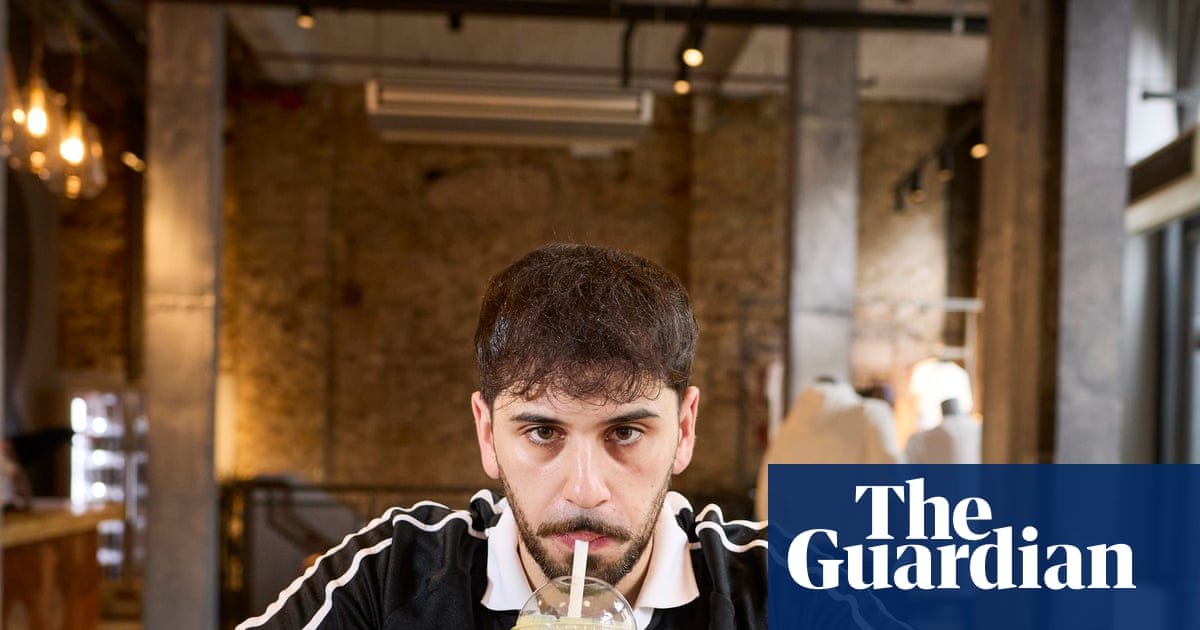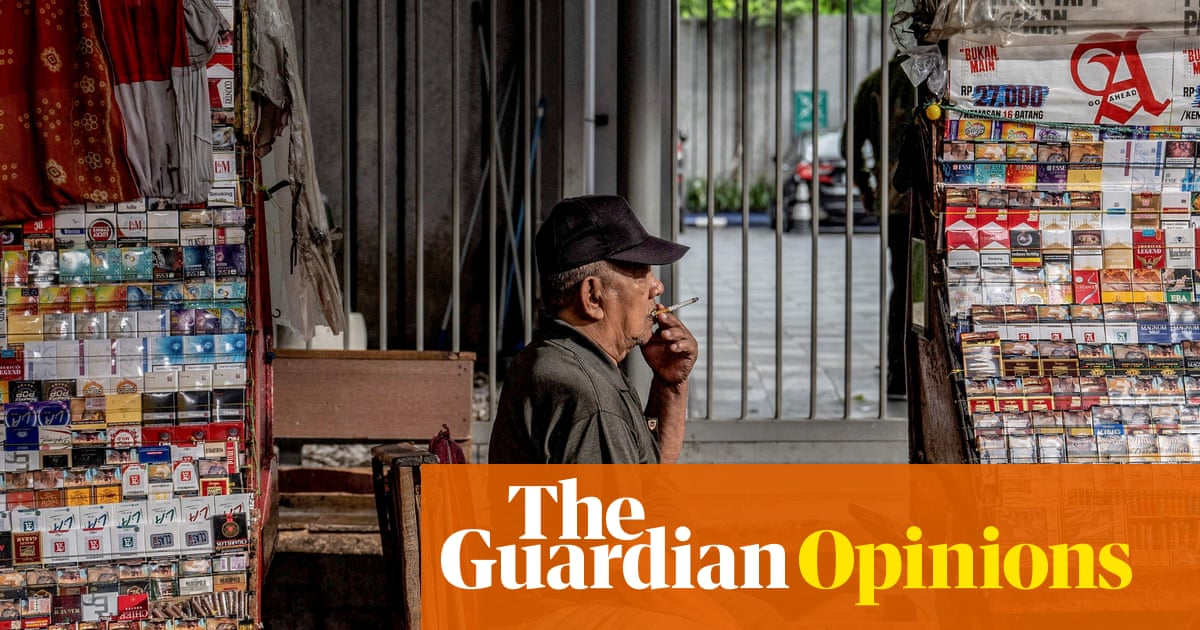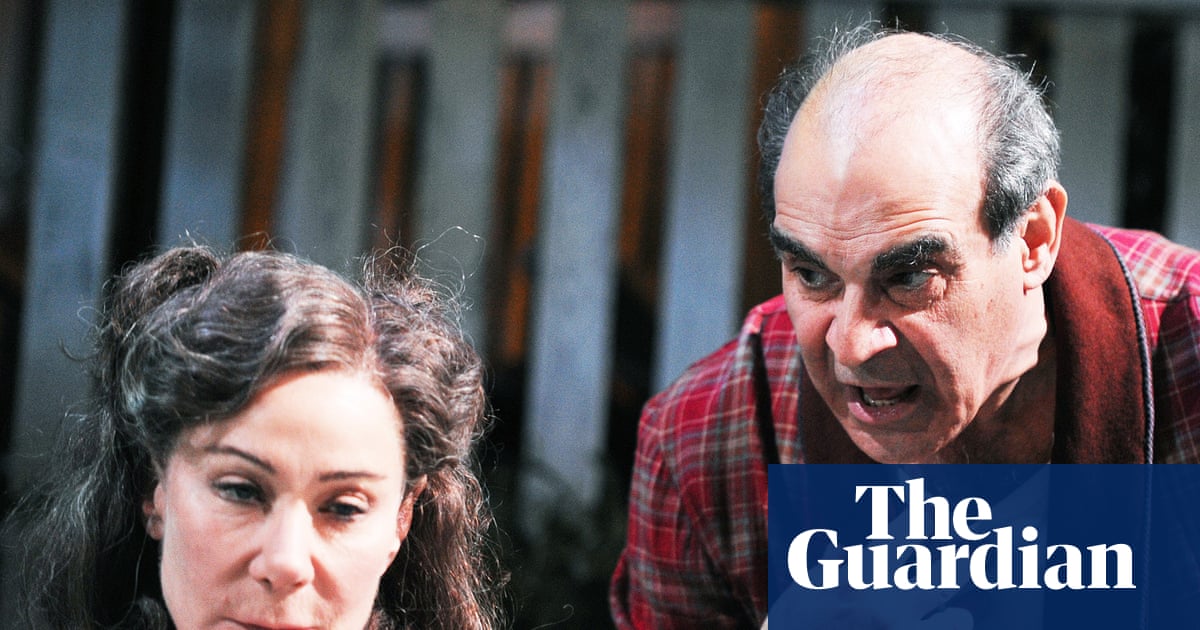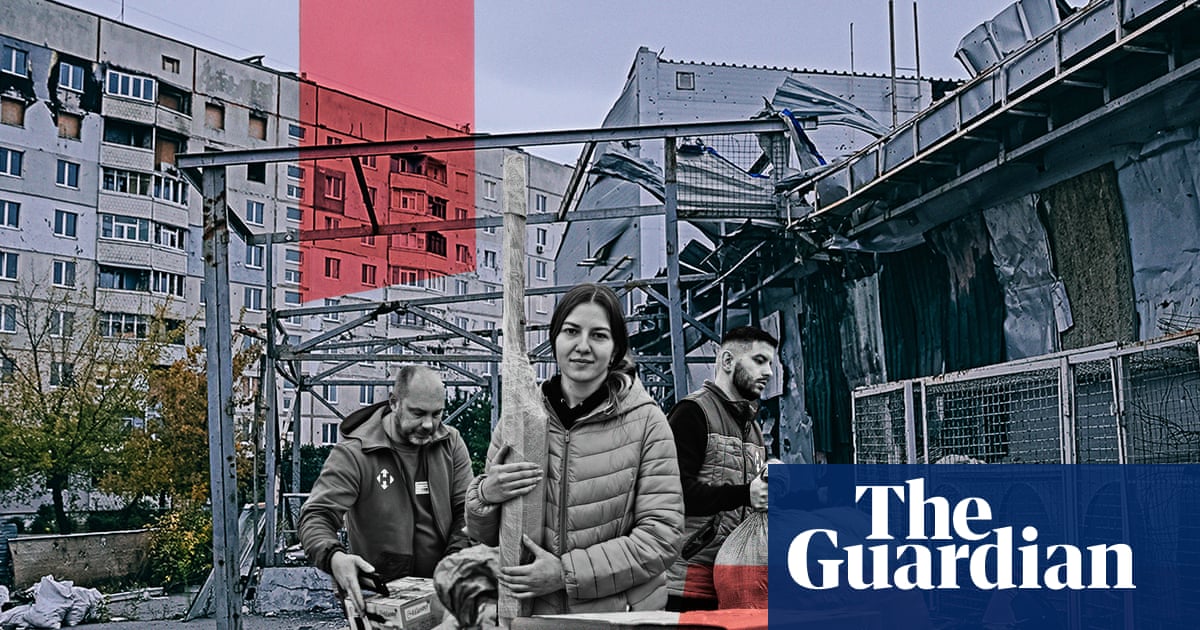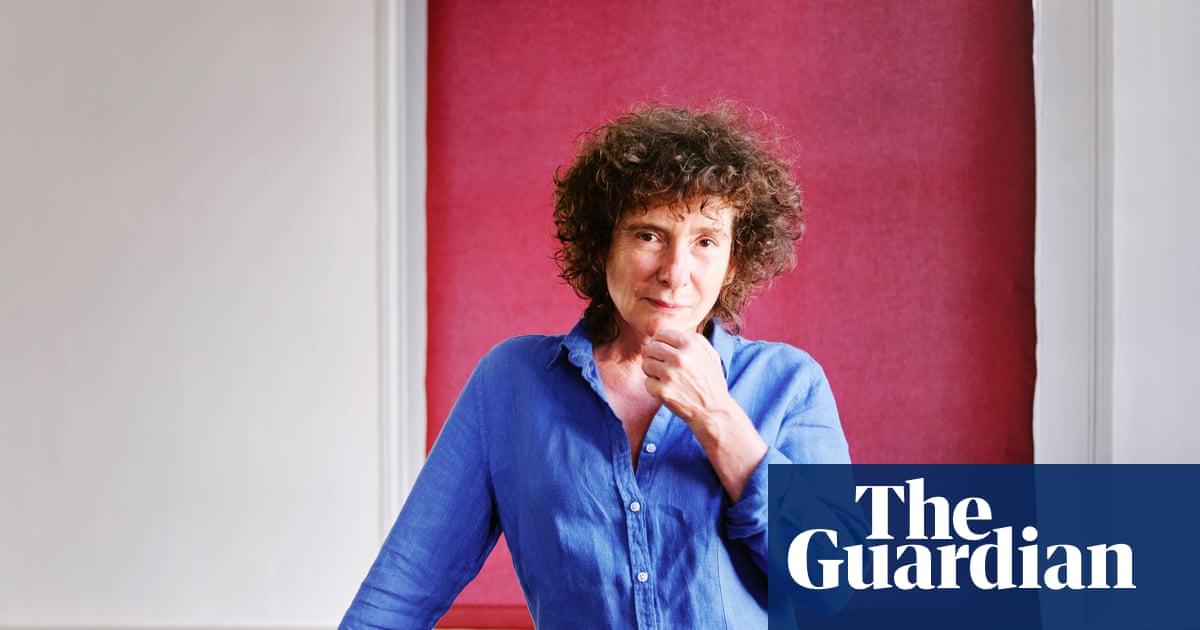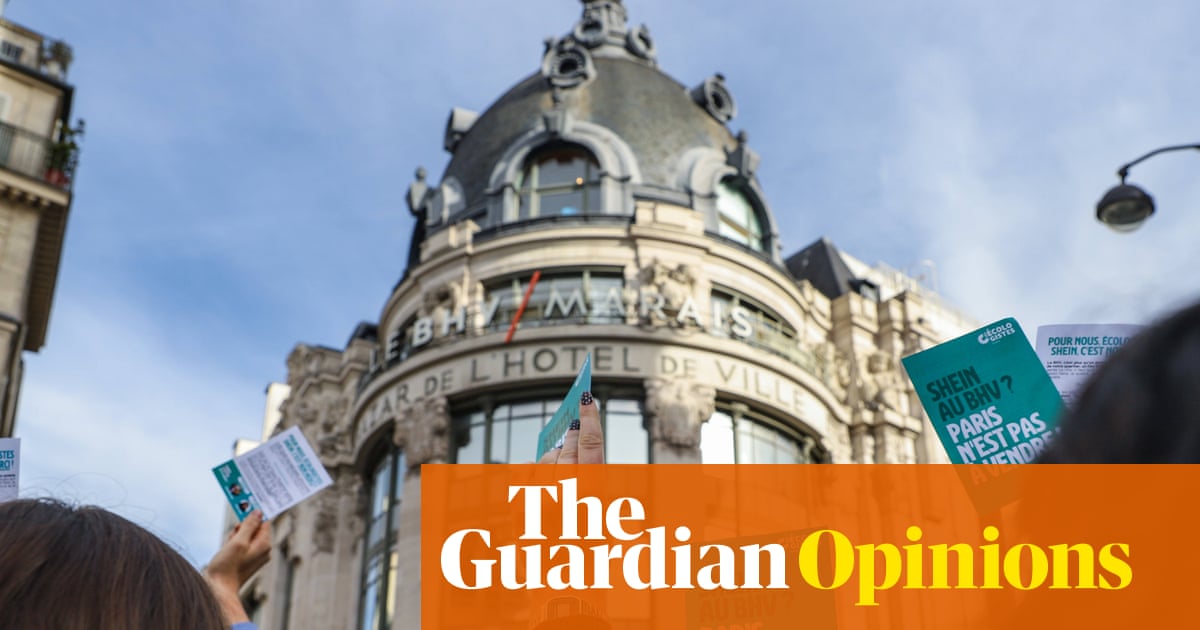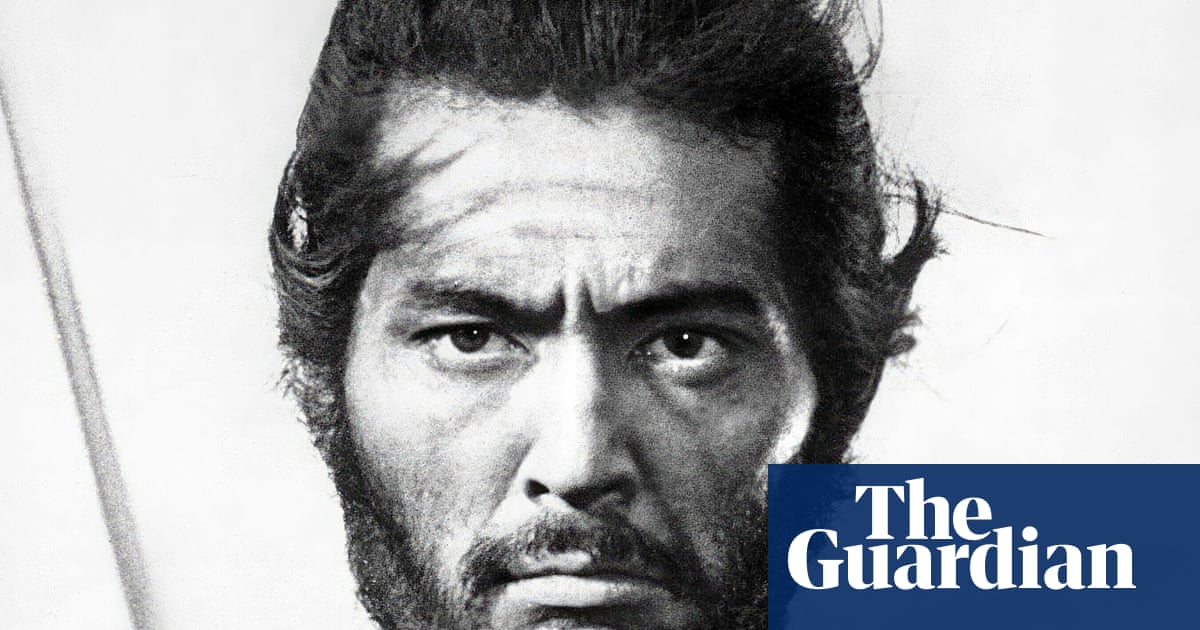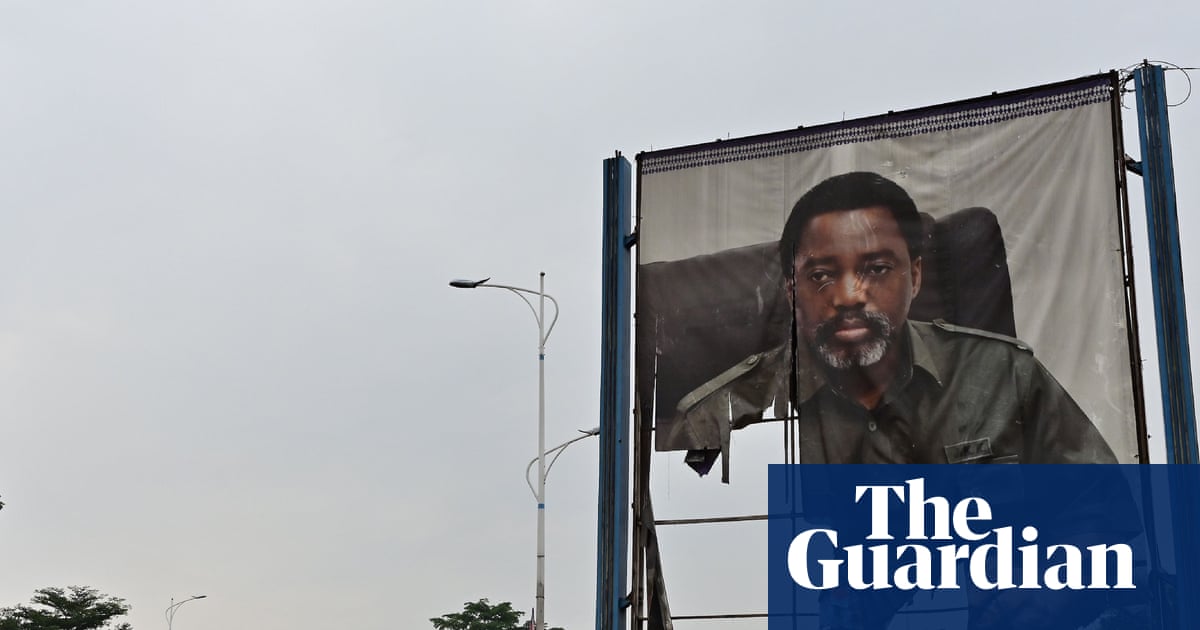Meditation and spiritual connection may be OK in small doses, but after three floors and 30,000 sq metres of darkened rooms, theatrical installations, altars and votive sculpture, more sound work than I’ve ever encountered in a single show, and a general encouragement to be moved, mesmerised and in touch with my spiritual side, my ears are ringing and I feel quite on edge.
The São Paulo biennale, the second oldest art exhibition of its type in the world, takes the title Not All Travellers Walk Roads for its 36th edition, a line, which, with some irony, is from Of Calm and Silence, a poem by the Brazilian writer Conceição Evaristo. In Cameroonian curator Bonaventure Soh Bejeng Ndikung’s show of 120 artists, this translates as imagining alternative forms of consciousness, invariably looking to nature and non-western belief systems.
The sound of birdsong greets you as you walk into the exhibition pavilion from São Paulo’s Ibirapuera Park. There are birds outside, but this is the recorded soundtrack to a garden planted in the gallery by US-Nigerian artist Precious Okoyomon. It features fresh earth, boulders and a tranquil pool, a mass of moss and trees that bow in the Brazilian heat coming through the pavilion glass. Later in the show, a botanist interviewed for a video installation by Theo Eshetu – all extreme closeups of plants, flowers mirrored and botanical footage shot in kaleidoscope – explains about plant “consciousness”, and how consciousness may not always be linked to the brain and could be experienced through other means. In this artificial garden we are encouraged to convene with nature.
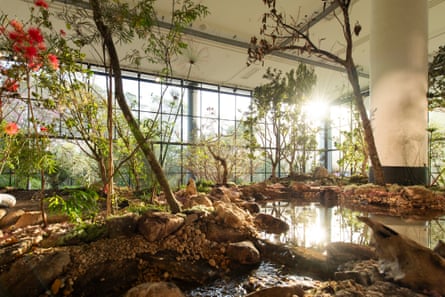
The tweeting and chirrupping has competition though: a sound system has been set up by Gê Viana, the speakers interspersed with the artist’s collages of forest fauna and old reggae maranhense parties. The subgenre of reggae that flourished in the Brazilian state of Maranhão, melodic and perhaps a bit sexier, booms across the gallery space. If this is the kind of alternative consciousness being encouraged, maybe I’m down with it. Whether the festivities are appreciated by Nádia Taquary’s bronze bird-women is unclear however. They don’t seem party types: their eagle heads bowed, they pray and adopt yogic-style poses around a great yellow tree, beaded branches hanging low from a bronze trunk. It is titled Ìrókò: The Cosmic Tree, and represents the orisha lord of ancestry in Candomblé, the Afro-Brazilian religion. More objects of worship are apparent too in a series of “altars” and “guardians” by French artist Carla Gueye, black clay obelisks with protruding breasts sat on beds of charcoal. Such votives become a recurring theme throughout the show, symbols of belief in this busiest of environments.
Specific materials reappear throughout the exhibition, too. Gueye’s briquettes are recalled in Emeka Ogboh’s The Way Earthly Things Are Going, a darkened room in which a series of spotlit tree trunks are embedded in circles of charcoal. Looped chanting emerges through speakers embedded in the wood. There’s charcoal, too, in Antonio Tarsis’s Orchestra Catastrophe: Act 1. Lumps of the stuff suspended on pendulums rhythmically hit a series of drums. Tree trunks pop up several times too, such as in Indigenous American composer Raven Chacon’s collaboration with producer Laima Leyton and former Sepultura drummer Igor Cavalera. The wood is again spotlit in spectacular fashion and soundtracked, this time with a composition inspired by Brazilian Indigenous music.
Fabric and textiles, knotted, pleated and tied, are everywhere: Theresah Ankomah has wrapped the biennale pavilion in multiple nets Christo-style. Indo-Caribbean artist Suchitra Mattei invites us into an elegant tent made from twisted sari material and Ana Raylander Mártis dos Anjos has created a series of floor-to-ceiling pillars from found fabric that run throughout the show. On each level is one of Otobong Nkanga’s beguiling tapestries of the natural world (or the natural world despoiled) while Laure Prouvost’s giant kinetic pink textile orchid suggestively floats up and down the height of the building’s atrium.

The audio works take the form of spoken poems; there are chants and ambient electronica within installations, high frequency noise and hormonal humming, darkened rooms in which mechanical instruments play; there are smoke and mirrors, literal and symbolic. As he does at Haus der Kulturen der Welt in Berlin, where he’s been director since 2023, Soh Bejeng Ndikung keeps signage to a minimum (so it’s often tricky to identify which work is by whom), and so the show shapes up as one giant sensory installation.
On the second floor, hints of urbanity creep in with a series of photographs of rivers by Wolfgang Tillmans. One shows a barge on the Amazon laden with cargo, in another we see the night-time illumination of a city on the shore of the Rhine. There’s another tent-like structure, though unlike Mattei’s silks, Zimbabwean artist Moffat Takadiwa’s walk-in sculpture is made of old bottle tops and strung together discarded computer keyboard keys.
This welcome bout of realism is continued in a multi-work presentation by one of Brazil’s most interesting artists. Gervane de Paula hails from Mato Grosso, which is called a “hinterland” state, and he aggressively plays with the cliches attached to rural culture, making hybrid wooden animals that mess with the vernacular art traditions of the region. Turning the cute souvenir on its head, two birds sport pistols for beaks. More disturbing still, the base on which they perch is marked “Comando Papo Vermelho”, a play on the name of one of Brazil’s biggest drug gangs. Like other artists in the biennale, de Paula has built an altar, but his is a cross with a Perspex front revealing it to be packed with prescription drugs: the artist’s sculpture is playful even as it riffs on the often grim reality of life beyond Brazil’s major centres.
after newsletter promotion
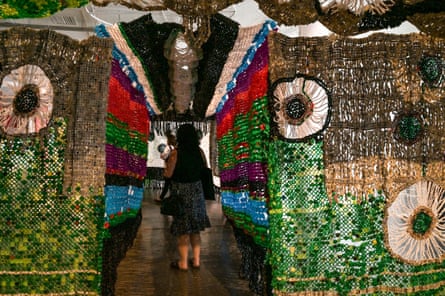
This sense of transgression – absent from some of the more obliquely sensorial works – is joyfully present in much of the historical work. Maria Auxiliadora da Silva paints wild scenes of parties in her 1970s works; the Moroccan painter Chaïbia Talal renders jolly couples in great impressionistic colourful strokes; while the fantastic Mozambican-Italian artist Bertina Lopez depicts glamorous women with red lipstick and matching nails in an art nouveau style. Even better are the forays into painting by the Rio de Janeiro samba legend Heitor dos Prazeres (a return for the artist, he was in the 1951 edition of the biennale): all cool-cat Black Brazilians pulling shapes and having a laugh on the streets, evocative and full of charm.
When I was lying on a hard metal bed, staring up at a light show projected on to the ceiling of Camille Turner’s domed installation, DreamSpace, a voice imploring me to “Send love to guide the path to truth”, I’d been close to that panic attack. I’m saved by a series of extraordinary five-metre copper scrolls by octogenarian artist Gōzō Yoshimasu; the Japanese lines inscribed on their surface are mostly obscured by the material’s slight reflection though, so really it’s just light and shade I’m staring at. It is extraordinarily beautiful. These calm and silent banner-poems are accompanied by Yoshimasu’s blotchy abstract watercolours on graft paper. They are titled Dear Monster and it makes me wonder whether I’m the monster for not being moved by so much of the clearly dearly felt art that preceded Yoshimasu. Yet after these hi-tech, AV-heavy simulacra of spiritual experiences, of nature and meditation, the Japanese artist seems proof that perhaps the best art doesn’t rely on complex bells and whistles.
-
The São Paulo biennale, Ciccillo Matarazzo Pavilion, runs until 11 January

 2 months ago
64
2 months ago
64




